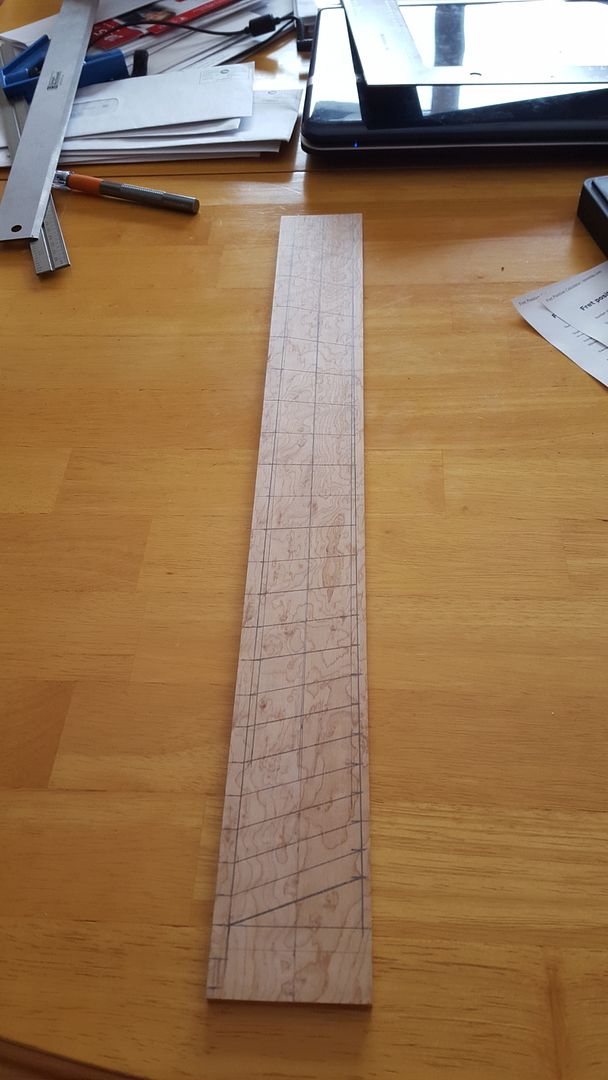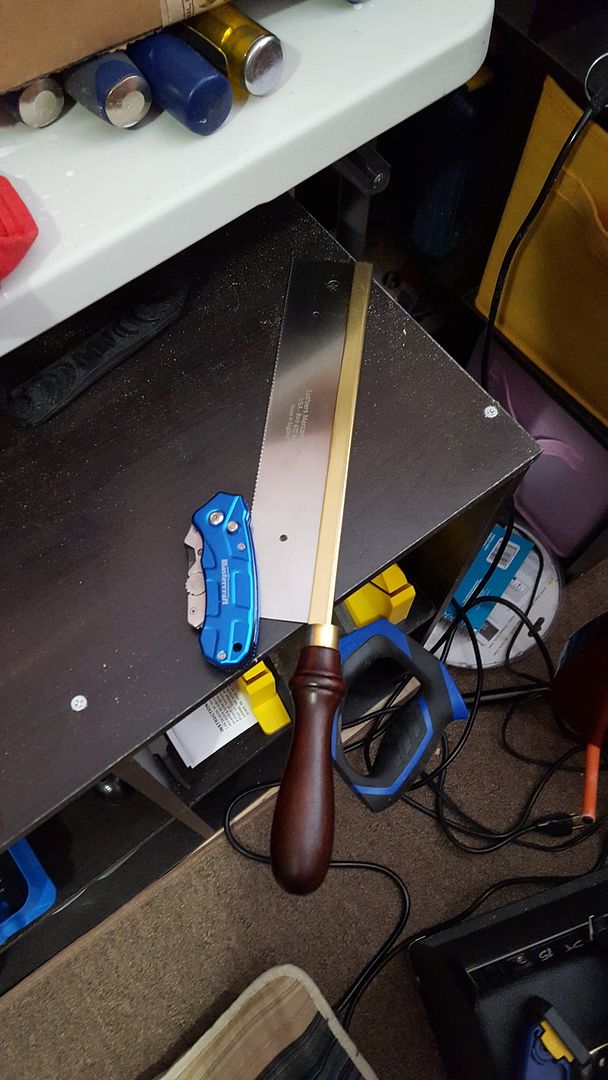-
-

ooooooo i'm interested in seeing your process!
-

This has me very, very excited. I'd love to do a project like this with James when he's old enough. Give us regular updates!
-

There will definitely be regular updates. No worries there. There are only two parts I think will be very difficult (aside from making sure the depth of the fret slots is good and they're right where they need to be. I'll be measuring a million times and cutting once): making sure the neck heel is the right size for the pocket in the body and cutting the truss rod channel. I'm planning to get a router to make both a lot easier but I'll do a lot of test cuts first to practice. Might even buy some more wood to practice on. I've already got a four foot maple board to practice construction techniques on, but you can never have too much practice.
Even if they're not bang on it's not the end of the world. It's a bolt on neck so I can shim it and you can help fix the truss rod in the slot by siliconing it in, but I would prefer to be able to get it perfectly. This is actually what I want to do for a living so money allowing I'm going to hold myself to some insanely high standards as I go.
And I completely support doing this with your son someday if he's interested Bubba. Maybe make him a nice 3/4 scale guitar when he's still a youngin'. If my girlfriend weren't so damn set on learning on her full size acoustic I'd actually make her a 3/4 electric. Not because she's a girl or anything though, she's just 5'1" and has tiny hands. I can barely stretch for some things right now (I'm still very much a beginner guitar player) and my hands are huge by comparison. Not sure how she'll manage as she improves. Mind you, my issues with my left wrist don't help. Hence why I'm making a fanned fret. They're supposed to be easier on the wrist and those days where my wrist is really acting up I'll have something I can play comfortably.
PS: apologies to any non-guitar players who are confused by any of this terminology. I'll be explaining it all and the anatomy of a guitar neck as I go so don't think you'll be lost every time I make progress.
-

This is pretty cool. I'll be interested in seeing how it turns out. Maple is probably the most comfortable wood to play on, even if it's never been my favourite to look at. So will the neck be one piece without any top for the fretboard?
I don't know too much about guitar making so this might be a dumb question, but on that sketch of the neck why are their only 19 frets, are you wanting to make it a smaller scale than usual? Also, the frets don't seem to get as small as I would expect way up at the base of the neck. Usually after about the 12 fret I'm used to seeing the frets get pretty small, but it could just be the angle of that picture making it seem like there's not too much difference between the 1 and the 18.
-

I'm doing the neck and fretboard as two pieces. Les Paul style as opposed to typical Fender maple neck style. It's just going to be a lot easier than trying to make the filler strip for the back of the neck with the tools I have at hand.
And yeah, I think I mentioned somewhere that I made the sketch too small so I only made it to fret 19 on there. I'm going to do 21 minimum. 22 if there's enough room on the fretboard I have while angling these things. And I'm going to check my measurements a few more times tomorrow just to be on the safe side, but I think part of the reason the lower frets look pretty big is a combination of factors. The angle makes everything look a bit strange, and it's thin pencil marks on bristol board right now as opposed to actual frets which would be wider and close that gap a bit. There's also not much there for size reference making the whole thing look huge in the picture. Up close and personal it looks closer to normal.
Plus the scale length is fairly long. 27.8 inches on the bass side and the standard Fender 25.5 inches on the treble side. Like I said, I'll be checking my measurements multiple times just to be safe though. I made a few mistakes while laying this out at first that I had to go back and correct and I'm a big believer in the mythbusters motto that failure is always an option so I don't count errors as being out of the realm of possibility until I've verified my measurements plenty of times. Measure twice and cut once is for professionals. We amateurs measure at least five or six times. 
-
-

YES! Awesome project. I don't think I've ever seen an angled fretboard! I must've been living underneath a rock :0
-

Fanned fret Guitars are becoming more popular in the last couple of years from what i can tell, but they're still pretty niche. Ibanez is the only major manufacturer that comes to mind that produces any right now, but they don't do any 6 string versions. Supposedly they intonate better but the main reason i want to try one is because they're supposed to be more ergonomic and easier on the wrist. We'll see in the end i suppose. Wrist case scenario i still have two standard Guitars and have gained a bunch of experience.
It's late tonight so i didn't get a ton of stuff done but I've started laying out the template I'll use to rough cut the shape of the neck. Tomorrow I'll take exact measurements of the neck pocket on the guitar body and work on exactly where it will be positioned. It's worth taking my time here since i need a thought fit and that neck needs to be dead straight.
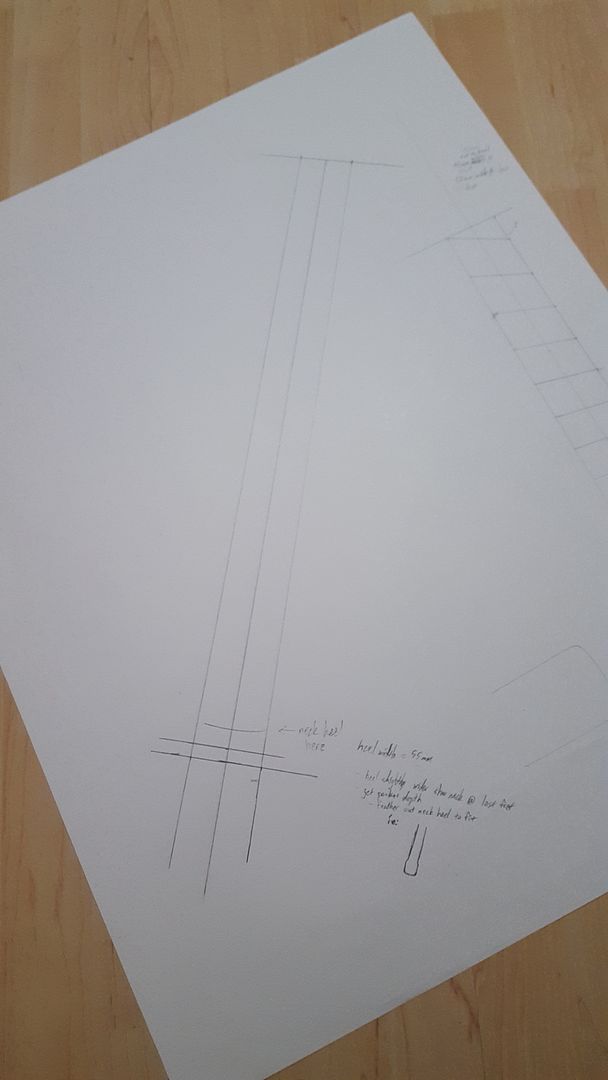
-

What radius will you be going for on your neck?
-

I was planning on 16" I think. I want more of a shredding style thin neck out of this. Plus I have a telecaster and an epiphone les paul already so I've got 9.5" and 12" radii already. Might as well add something different.
-

Sounds good. Should be an extremely player friendly guitar. And even though the neck and fretboard are in two pieces you are doing both in maple, correct?
-

I am indeed. One of the nice things about living in eastern North America is quality maple is easy to come by at low prices.
-

I watched a video of someone making a guitar on Youtube yesterday and damn does it look complicated.
-

There are definitely a lot of steps. And if you're doing it often you'll end up making some complicated jigs to streamline things.
But i don't think it's out of the realm of an amateur builder to accomplish. It just requires a lot of planning, patience and care. I've actually seen at least one guy build a les paul with nothing but hand tools. There were no complicated jigs to speak of and not a power tool in sight. One of the more impressive things I've ever seen. Not sure I'd have the ability to tackle a set neck like that with hand tools just yet.
 Posting Permissions
Posting Permissions
- You may not post new threads
- You may not post replies
- You may not post attachments
- You may not edit your posts
-
Forum Rules







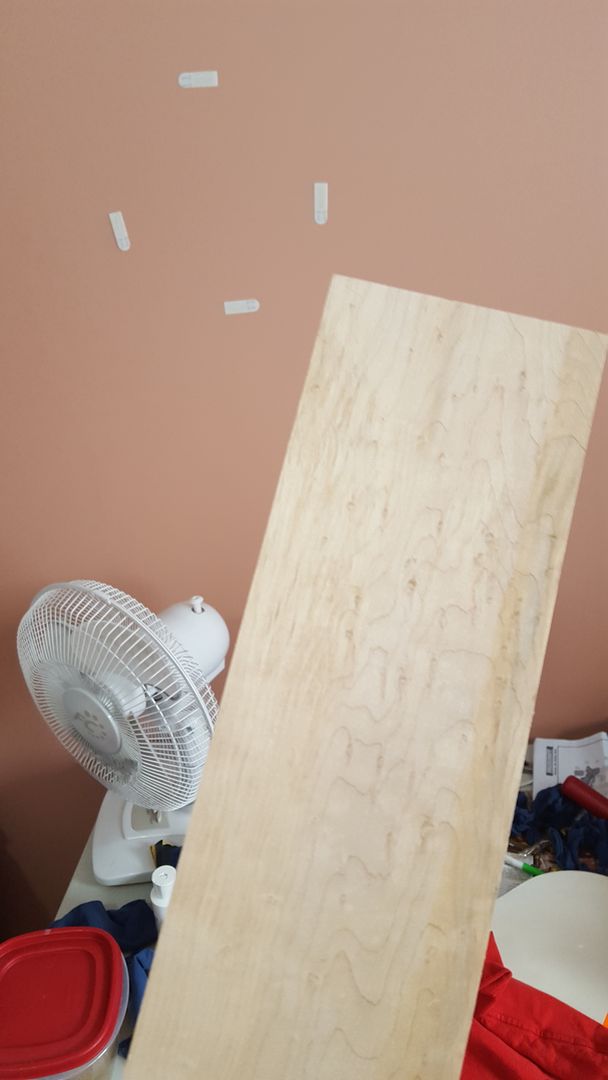
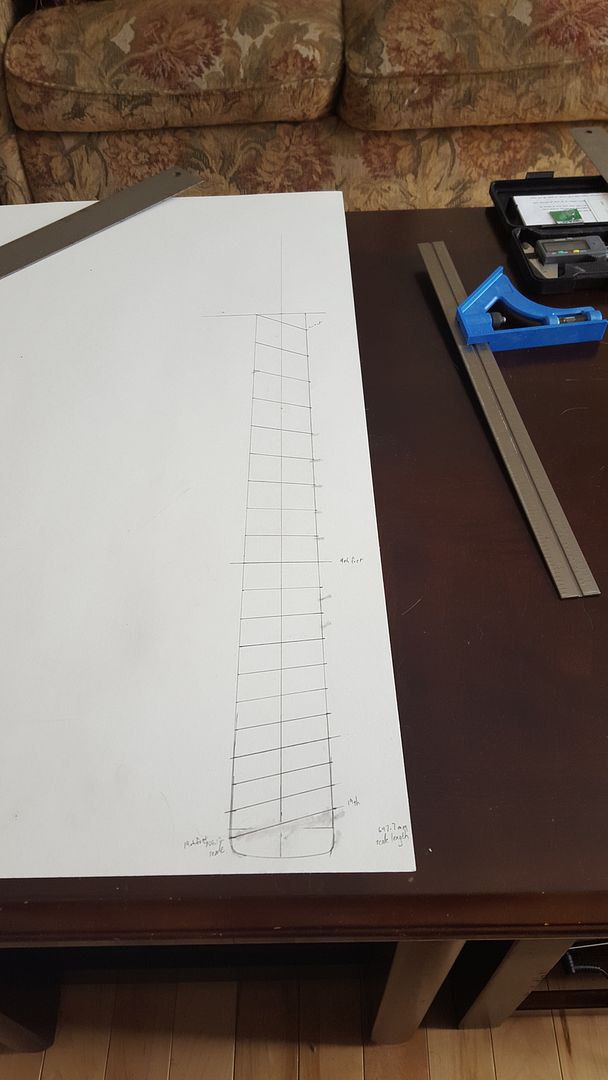


 Reply With Quote
Reply With Quote



